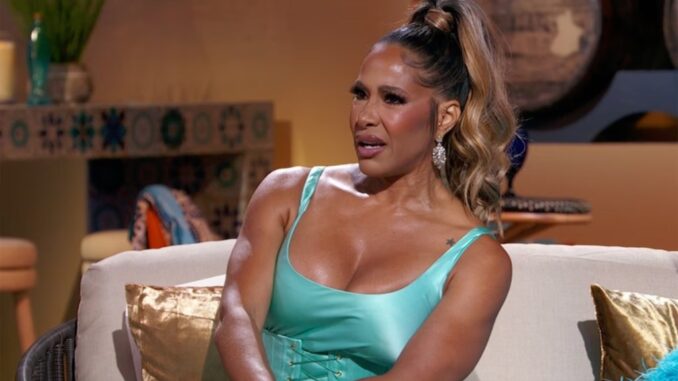
Shereé Serving Looks, But Not Paying Invoices: A Runway Through Reality TV Debt
Shereé Whitfield, a name synonymous with the glitz and glamour of reality television, is equally known for her unwavering confidence and her… shall we say, creative approach to financial obligations. The saga of Shereé serving looks while seemingly dodging invoices is a recurring narrative on "The Real Housewives of Atlanta," a narrative that serves as a fascinating, if often frustrating, microcosm of ambition, image, and the blurred lines between reality and performance that define the reality TV landscape. It's a tale of high fashion aspiration clashing with the harsh realities of budgeting, a catwalk built on a foundation that, at times, appears decidedly shaky.
The "looks" are undeniable. Shereé’s presence commands attention. Whether she’s dripping in diamonds at a charity gala, rocking a custom-designed gown on a cast trip, or simply sporting a perfectly coiffed wig for a lunch date, Shereé exudes an air of effortless chic. She embodies the aspirational lifestyle that many viewers crave, a lifestyle fueled by designer brands, lavish parties, and an unwavering belief in her own fabulousness. She understands the power of image, using it as both a shield and a sword, projecting a picture of success even when the financial realities behind the facade might suggest otherwise. Her fashion is a statement, a declaration that she belongs in the upper echelons of Atlanta society, a society that often measures worth in the currency of couture.
However, the narrative quickly shifts when the topic turns to the "invoices." The shadow of unpaid bills often follows Shereé like a persistent paparazzi. Tales of contractors left unpaid for years on Chateau Shereé, legal battles stemming from unresolved debts, and whispered rumors of financial woes circulate within the Housewives' social circle and spill onto the screen. These instances paint a stark contrast to the polished image Shereé so meticulously cultivates. They reveal a potential disconnect between the perception of wealth and the actual financial stability, raising questions about the sustainability of her lifestyle.
The spectacle of Shereé’s financial drama provides a compelling, albeit uncomfortable, commentary on several themes. First, it highlights the pressure to maintain a certain image in the age of social media and reality TV. The expectation to constantly showcase a life of luxury can be incredibly demanding, potentially leading to unsustainable spending habits and a reliance on appearances over substance. Shereé, in this context, becomes a symbol of the anxieties surrounding wealth and status in a society increasingly obsessed with projecting an image of success.
Secondly, the saga underscores the complexities of entrepreneurship. Shereé has pursued several business ventures, including her fashion line, She by Shereé. While ambition and creativity are undoubtedly present, the challenges of launching and sustaining a successful business, particularly in a competitive industry, are often glossed over. The financial difficulties associated with these ventures are frequently presented as personal failings rather than as the inherent risks of entrepreneurship, further fueling the narrative of Shereé’s financial instability.
Finally, Shereé's situation reflects a larger conversation about the ethics of reality television. The producers often encourage drama and conflict, potentially exacerbating existing financial issues for the sake of entertainment. While Shereé is undoubtedly responsible for her own financial decisions, the environment of reality TV, with its constant scrutiny and pressure to perform, can contribute to a cycle of unsustainable spending and public humiliation.
In conclusion, the story of Shereé serving looks but not paying invoices is more than just a reality TV trope. It's a complex and multifaceted narrative that explores the pressures of maintaining a certain image, the challenges of entrepreneurship, and the often-unethical dynamics of reality television. While Shereé’s financial choices are her own, her struggles serve as a cautionary tale about the dangers of prioritizing appearance over financial stability in a world increasingly driven by perception and performance. The runway she treads, though filled with stunning designs, may ultimately lead to a reckoning with the bills that inevitably come due. Ultimately, the question remains: can Shereé truly own her look, or will the invoices forever haunt her next catwalk appearance?
